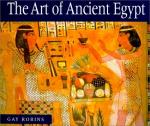|
This section contains 440 words (approx. 2 pages at 300 words per page) |

|
Unknown–c. 2600 B.C.E.
Vizier
Divinity.
The Egyptian term netjer could be applied to a range of entities. In addition to gods, the word could be applied to the king, certain animals, and the dead. Egyptians venerated their deceased ancestors as in some sense divine. There are a few individuals in Egyptian history whose divinity grew to exceed the bounds of their own families, and who eventually came to have a place in the pantheon of Egyptian gods. Two such individuals are Imhotep and Amenhotep, son of Hapu, who both gained the title of netjer in Egyptian writing.
Offices.
Imhotep served as a vizier (high government official) and architect under King Djoser of the Third Dynasty. He also held the offices of high priest of Re at Heliopolis, and the chief of sculptors and makers of stone vessels. He is credited with designing the king's step pyramid...
|
This section contains 440 words (approx. 2 pages at 300 words per page) |

|




